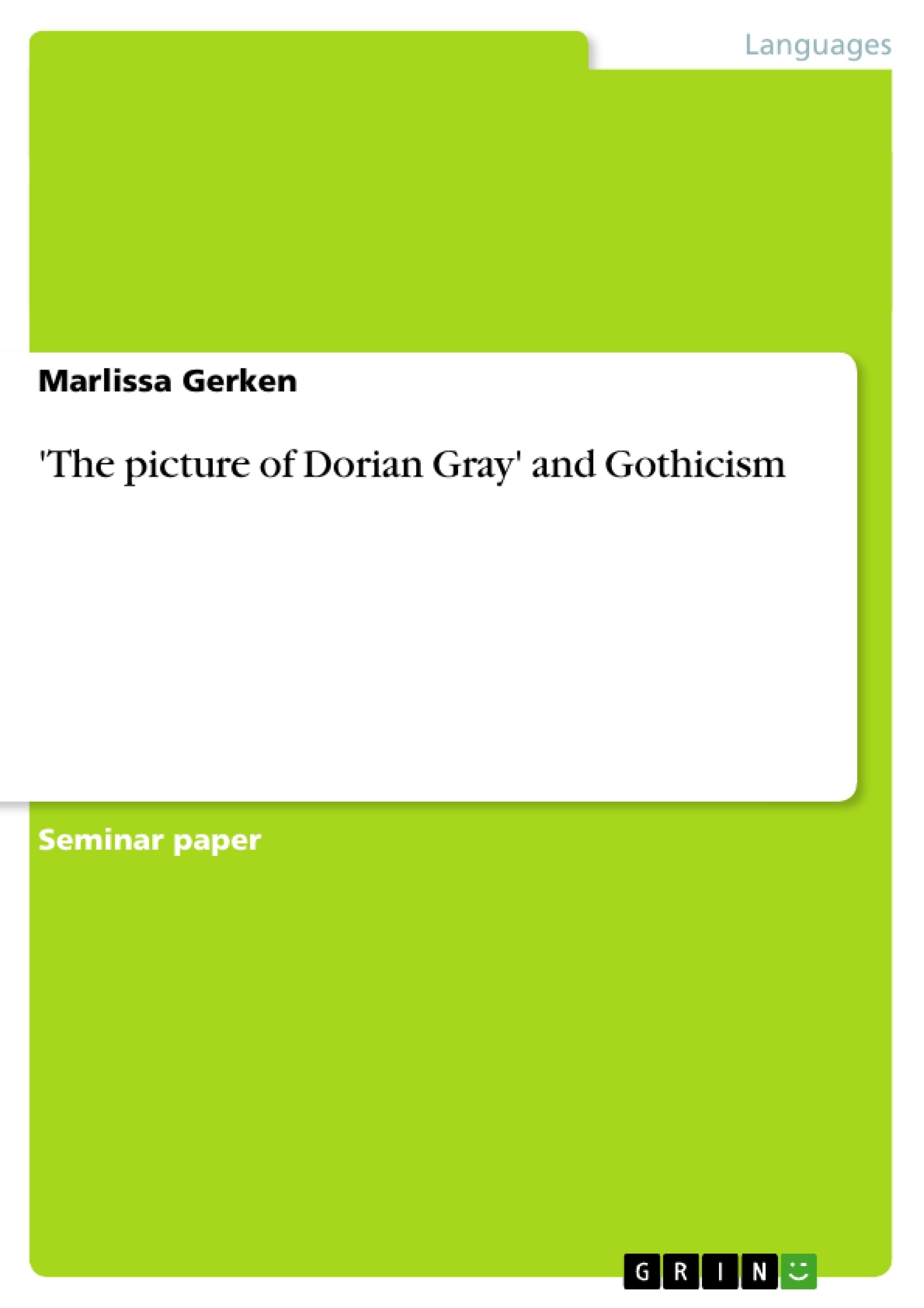Today, a Gothic novel is commonly defined as “a story of terror and suspense, usually set in a gloomy old castle or monastery” . This definition is based on the traditional Gothic novel, which was originated by Horace Walpole in 1764 . A number of elements came to be classed as Gothic and by the end of the century, the genre was fully established . However, when examining different Gothic works that have been published since the beginning of the Gothic tradition, one finds that the Gothic cannot be reduced to a scary story with a medieval setting.
The Gothic is a genre that changes over time. The traditional elements usually persist, but new features are added to enrich the genre and to catch the spirit of the time. Kelly Hurley made the important observation that the “Gothic is rightly […] understood as a cyclical genre that re-emerges in times of cultural stress in order to negotiate anxieties for its readership by working through them in displaced (sometimes supernaturalized) form.” When a nation is exposed to either internal or external threats, which often cannot be clearly defined, the people begin to feel uncomfortable. The Gothic novel then, according to Hurley, can help these people in distress by giving concrete shapes to their fears.
When the Gothic novel first came up at the end of the 18th century, people in Britain were coping with the impact of the French Revolution. The tradition flourished until the 1820s, when Charles Maturin’s work Melmoth the Wanderer failed to reach a large readership . In the 1890s then, which is known as the time of the Gothic revival, new Gothic figures emerged with even greater force than at the previous fin de siècle . The Victorian public had undergone great changes, resulting from the British Empire being threatened by external and internal forces. Interestingly, the setting was now no longer removed in time and space; Gothic occurrences at this point revolved around the city of London.
Oscar Wilde’s The Picture of Dorian Gray is an important work of this era; it shows most of the new features of the New Gothic. This paper will focus on the changes in Victorian society that led to a revival of the Gothic novel and discuss the traditional as well as the new elements that have arisen in the Gothic tradition at the end of the 19th century. Wilde’s novel will hereby provide the textual evidence.
Inhaltsverzeichnis (Table of Contents)
- Introduction.
- The Gothic genre.
- Origins of the Gothic tradition
- The Gothic Return in the 1890s
- Scientific Theories of the Victorian fin de siècle.
- Main Characteristics of the New Gothic
- The Gothic in Oscar Wilde's The Picture of Dorian Gray.
- Conclusion...
- Bibliography.
- Primary Literature
- Secondary Literature
Zielsetzung und Themenschwerpunkte (Objectives and Key Themes)
This paper examines the revival of the Gothic novel in the 1890s, focusing on the social and cultural anxieties of Victorian society that contributed to its resurgence. It analyzes the traditional and new elements of the Gothic tradition as manifested in Oscar Wilde's The Picture of Dorian Gray, highlighting the evolution of the genre and its ability to reflect the anxieties of its time.
- The influence of social and cultural anxieties on the Gothic genre.
- The evolution of the Gothic genre from its origins to the Victorian era.
- The role of scientific theories and the fin de siècle in shaping the New Gothic.
- The manifestation of Gothic elements in Oscar Wilde's The Picture of Dorian Gray.
- The relationship between the Gothic genre and the societal anxieties of the Victorian era.
Zusammenfassung der Kapitel (Chapter Summaries)
- Introduction: This chapter introduces the concept of the Gothic novel and its historical evolution, emphasizing the genre's ability to reflect and negotiate societal anxieties. It explores the cyclical nature of the Gothic, highlighting its re-emergence during times of cultural stress.
- The Gothic genre: This chapter delves into the origins and development of the Gothic tradition, tracing its roots to Horace Walpole's The Castle of Otranto. It examines the characteristic elements of the Gothic, including medieval settings, supernatural occurrences, and the portrayal of women as victims. The chapter also discusses the decline and subsequent revival of the Gothic in the Victorian era, highlighting the social and cultural factors that led to its resurgence.
- The Gothic in Oscar Wilde's The Picture of Dorian Gray: This chapter explores the specific manifestations of Gothic elements in Wilde's novel. It analyzes how the work reflects the anxieties and concerns of Victorian society, particularly in relation to the rise of industrialization, the decline of the British Empire, and the changing social landscape. The chapter highlights how Wilde uses Gothic tropes to explore themes of beauty, morality, and the consequences of unchecked desires.
Schlüsselwörter (Keywords)
This paper focuses on the Gothic genre, particularly its revival in the Victorian era. Key concepts include societal anxieties, the impact of scientific theories, the fin de siècle, and the manifestation of Gothic elements in literature, specifically in Oscar Wilde's The Picture of Dorian Gray. The analysis explores the connection between the Gothic tradition and the anxieties of its time, highlighting its ability to reflect and negotiate cultural anxieties.
- Quote paper
- Marlissa Gerken (Author), 2005, 'The picture of Dorian Gray' and Gothicism, Munich, GRIN Verlag, https://www.grin.com/document/77530



